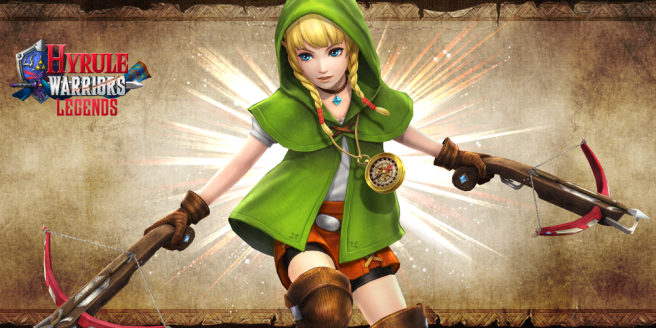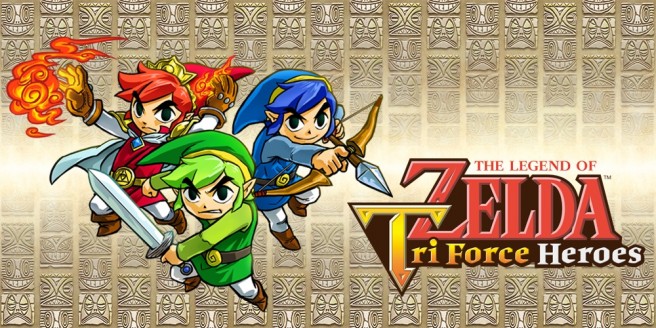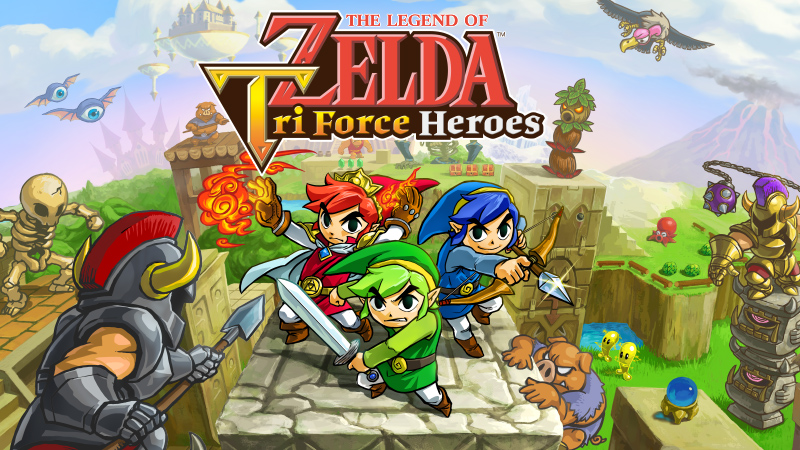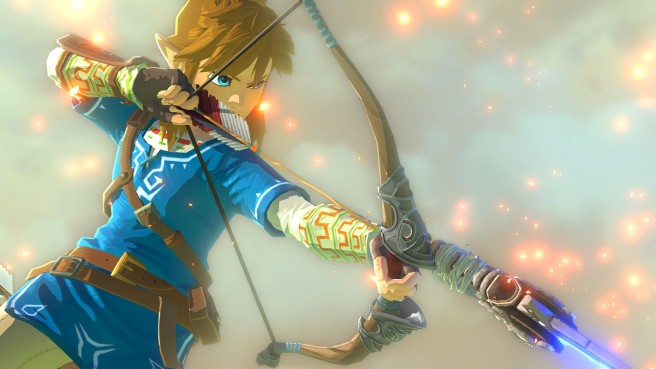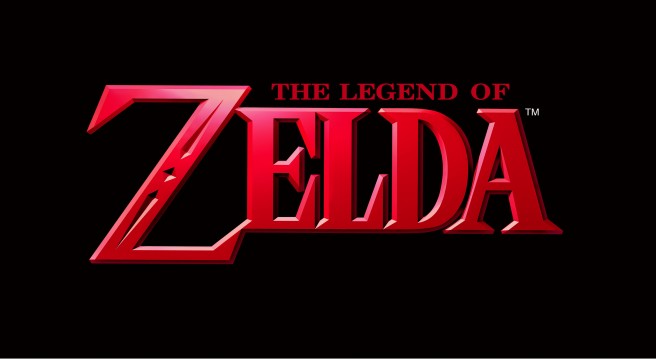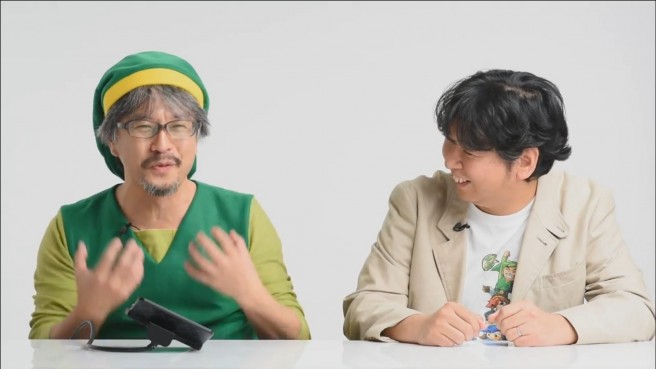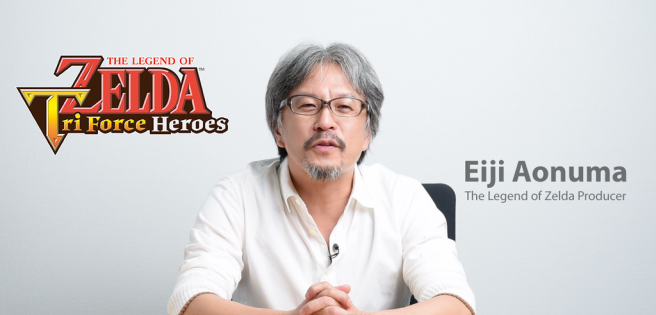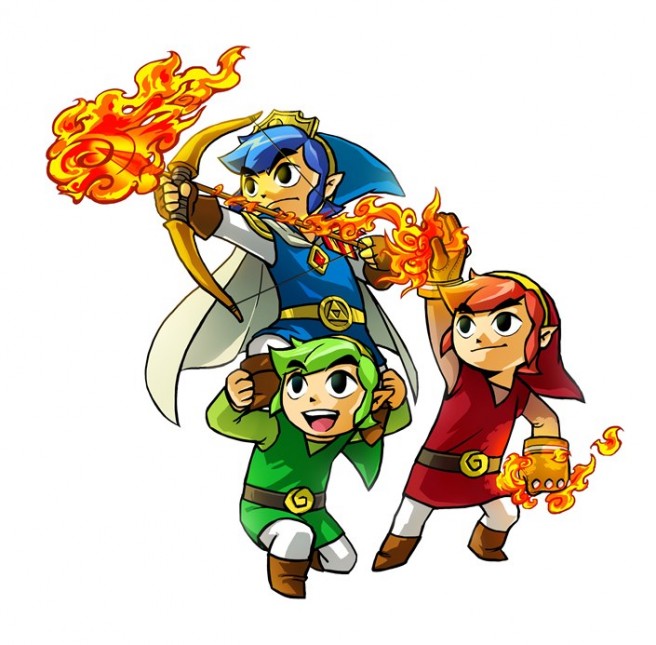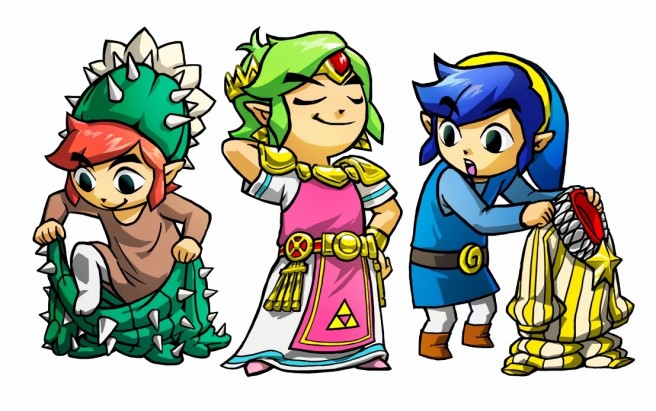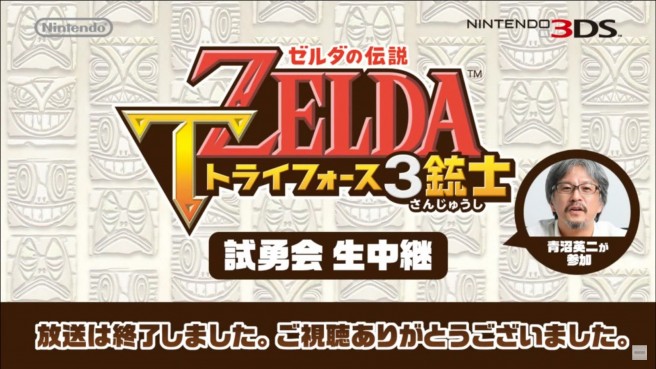Aonuma says Linkle will be kept in mind for future Zelda games
Posted on 9 years ago by Brian(@NE_Brian) in 3DS, General Nintendo, News | 110 Comments
Linkle is making her debut in Hyrule Warriors Legends. However, it’s possible that we’ll see the character in future Zelda games.
Speaking with IGN, series producer Eiji Aonuma said: “I’m sure we will keep her in mind when thinking about future titles.”
Aonuma also said that he was able to share input about Linkle during the development of Hyrule Warriors Legends:
“I had a chance to give feedback on Linkle during development, but the satisfying action of using a crossbow, which we developed for the spinoff title Link’s Crossbow Training, was implemented this time completely by Koei Tecmo. It may feel a little different from other titles in the franchise, but she doesn’t feel out of place at all in the world of the Zelda games.”
Tri Force Heroes devs – communication origins, cut item ideas, amiibo in future Zeldas, more
Posted on 9 years ago by Brian(@NE_Brian) in 3DS, General Nintendo, News | 3 Comments
GameSpot has posted an interview with Zelda series producer Eiji Aonuma and Tri Force Heroes director Hiromasa Shikata. Between the two, they commented on the inspiration behind the game’s communication features, item ideas that were scrapped, consideration for two-player support, interest in using amiibo in future Zelda games, and more.
We’ve rounded up the various comments below. You can also read up on a few extra comments from GameSpot here.
Zelda: Tri Force Heroes – Miiverse messages from Aonuma and Shikata, why 3 players instead of 4
Posted on 9 years ago by Brian(@NE_Brian) in 3DS, News | 8 Comments
With the launch of Zelda: Tri Force Heroes in the west, series producer Eiji Aonuma and Shikata took to Miiverse and talked a bit more about the game.
First, here’s some opening comments from Aonuma:
We next have comments from Shikata, who explains why the game features three players instead of four:
More: Eiji Aonuma, Hiromasa Shikata, Miiverse
Aonuma planning a surprise twist for Zelda Wii U’s open world
Posted on 9 years ago by Brian(@NE_Brian) in News, Wii U | 59 Comments
Zelda producer Eiji Aonuma has commented a bit more on the new entry in the series for Wii U.
Speaking with IGN, he commented about the game’s open world. Aonuma acknowledged that some fans were hoping that Skyward Sword had a bigger open world, and for this title, he wants to “put a surprise, or kind of a twist, on my view of an open world game.”
He said:
“We actually had some feedback from Skyward Sword, where people were saying, ‘This is not exactly the Zelda game I was looking for, I was looking for a bigger open world.’ Unfortunately, I can’t go into details but I’m hoping to put a surprise, or kind of a twist, on my view of an open world game. I hope that you’ll look forward to it.”
Aonuma also talked about fan feedback. Though the development team reads a lot of what fans think about the series, not all of their feedback will make it into future Zelda titles.
“If we put all the feedback the fans write directly into the game, there won’t be an element of surprise. If there’s a comment and they’re asking for certain element, I would think, ‘Oh, why not interpret this in a different way that you wouldn’t expect?’ That’s how we create a new element in a Zelda game. I always want to implement something new and surprising into every game.“
More: Eiji Aonuma, interview, top, Zelda Wii U
Aonuma on Zelda’s 30th anniversary, team is doing its best with Zelda Wii U
Posted on 9 years ago by Brian(@NE_Brian) in General Nintendo, News, Wii U | 85 Comments
This week, Famitsu has another feature on The Legend of Zelda: Tri Force Heroes. Along with a general article about the game, there’s also a small interview with some of the game’s developers, including series producer Eiji Aonuma. Although most of the discussion naturally focused on Tri Force Heroes, Famitsu did ask a couple of other questions about the franchise.
Next year will be the 30th anniversary of The Legend of Zelda. When Famitsu mentioned this, Aonuma told the magazine:
“This year we wanted a Majora’s Mask concert, so it is not impossible that there may be a 30th anniversary concert next year. However, as we are trying to complete the new Zelda as fast as possible, that is all that is on our minds. That being said, we hope something will take form for the 30th anniversary. It is especially important to a producer of the series, so I hope to give something everyone can look forward to next year.”
Aonuma plays Zelda: Tri Force Heroes again, now with the game’s director
Posted on 9 years ago by Brian(@NE_Brian) in 3DS, Videos | 26 Comments
When Nintendo held the first round of Japanese Zelda: Tri Force Heroes online demo events last weekend, series producer Eiji Aonuma played for an hour during a live stream. The first of two final events just ended a short while ago, and Aonuma appeared on another broadcast with director Hiromasa Shikata. You can watch the recorded stream below.
Zelda: Tri Force Heroes – Eiji Aonuma let’s play, now with English subtitles
Posted on 9 years ago by Brian(@NE_Brian) in 3DS, Videos | 2 Comments
A few days ago, Nintendo shared a 15-minute video in which Zelda producer Eiji Aonuma played through Tri Force Heroes. Nintendo of Europe has now uploaded a new version with English subtitles, which we have below.
Zelda: Tri Force Heroes received online play thanks to Four Swords Anniversary Edition feedback
Posted on 9 years ago by Brian(@NE_Brian) in 3DS, News | 17 Comments
The inclusion of online multiplayer in The Legend of Zelda: Tri Force Heroes can be at least partially attributed to feedback Nintendo received from Four Swords Anniversary Edition. In an interview with 4Gamer, Zelda producer Eiji Aonuma mentioned that the team learned via surveys on Club Nintendo that players wondered about the lack of Internet functionality within the DSiWare title. With Tri Force Heroes, the team wanted to make sure that online support would be integrated.
Zelda: Tri Force Heroes has a special costume that can only be obtained through local multiplayer
Posted on 9 years ago by Brian(@NE_Brian) in 3DS, News | 23 Comments
The Legend of Zelda: Tri Force Heroes features over 30 costumes that can be accessed through normal play. But there’s one that is only obtained by teaming up with friends locally.
When playing local multiplayer (including Download Play), you’ll receive an item called the “proof of friendship”. You’ll get one “proof” per friend’s system. A currently unspecified amount is needed in order to obtain the special costume.
Speaking with Japanese website 4Gamer, Zelda series producer Eiji Aonuma and Tri Force Heroes director Hiromasa Shikata explained that the team thought they should make a reward for those people for play locally. Head past the break for our translation of the interview excerpt.
Watch Aonuma play Zelda: Tri Force Heroes for an hour
Posted on 9 years ago by Brian(@NE_Brian) in 3DS, Videos | 18 Comments
A couple of days ago, Nintendo published a Zelda: Tri Force Heroes gameplay video with series producer Eiji Aonuma. We now have a video with much more extensive footage, which you can view below.
Aonuma was actually playing the game as the first online demo period went live in Japan. Nintendo is planning two more sessions next weekend.
